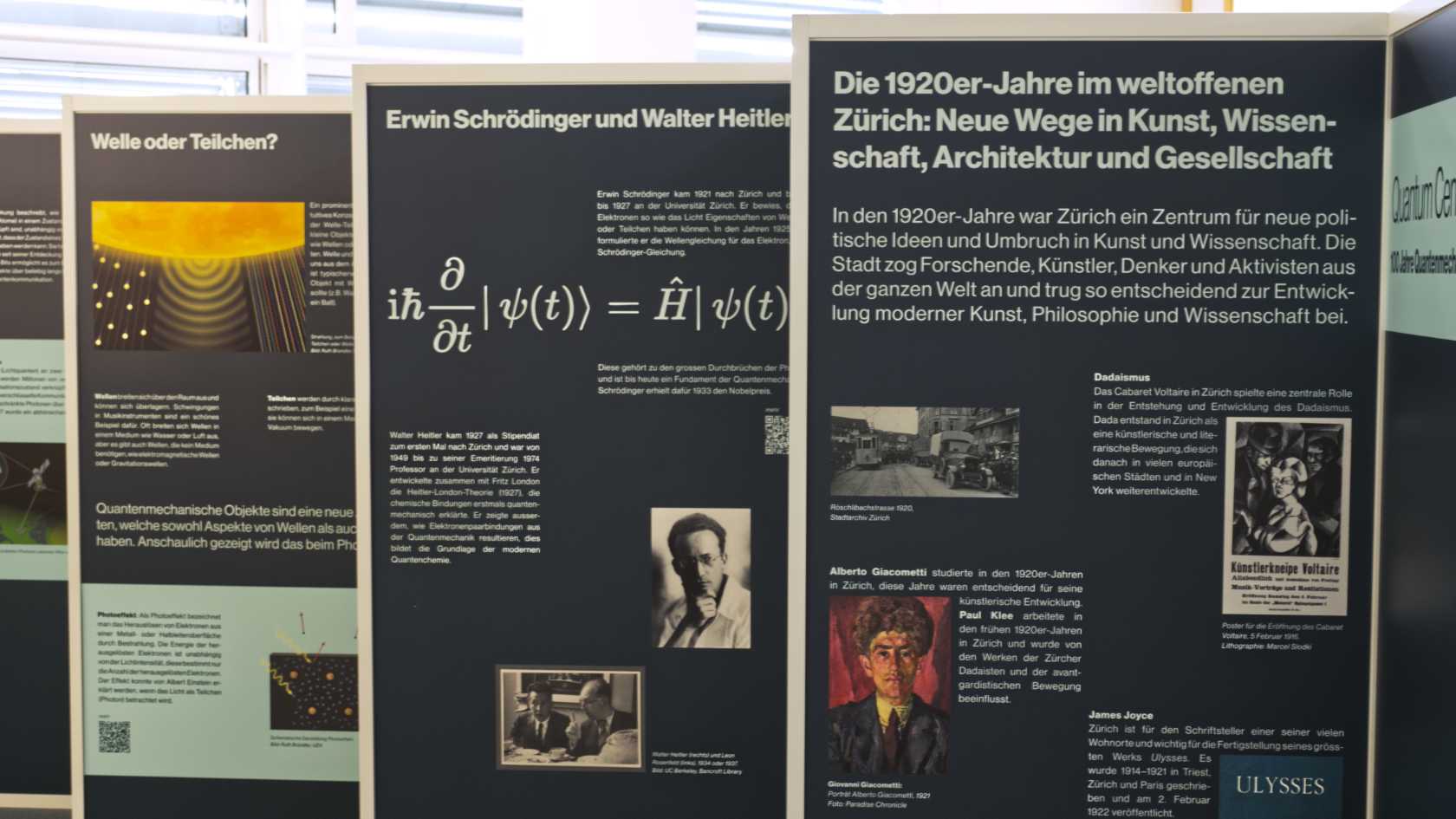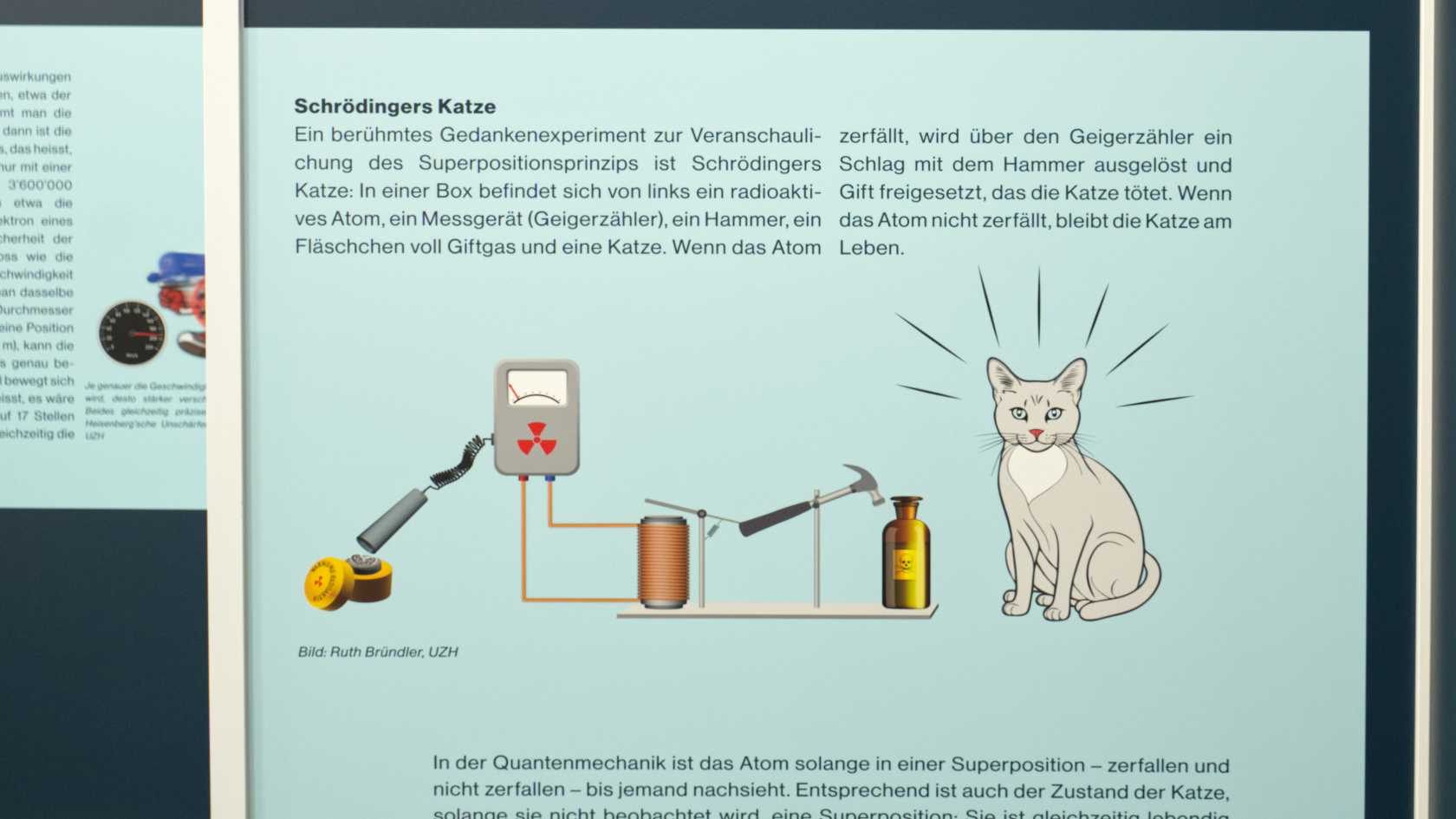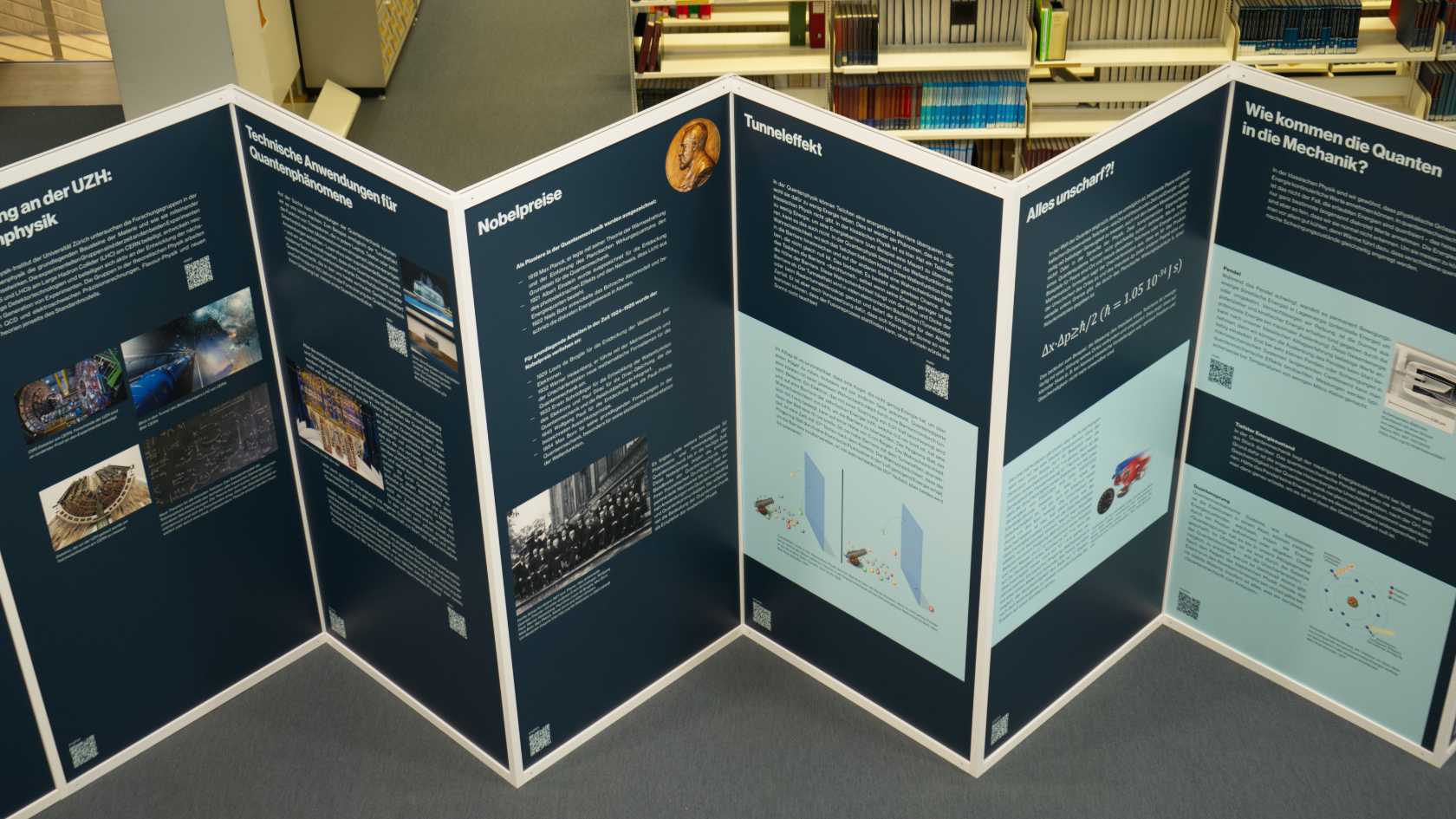Schrödinger’s Legacy

One of the most revolutionary theories in physics was developed at the University of Zurich (UZH): Erwin Schrödinger was a professor at UZH when he published his famous equation, which mathematically describes the motion and properties of particles at the quantum mechanical level. His equation proved that electrons can behave like both particles and waves. In doing so, Schrödinger answered an important question about the nature of atoms that other great minds in physics, such as Werner Heisenberg, Niels Bohr and Albert Einstein, were addressing at the time.
This year, UZH is hosting a series of events to celebrate the 100th anniversary of Schrödinger’s groundbreaking equation. Last Friday, a symposium covered topics ranging from the first steps of quantum mechanics to potential future applications and the challenges they pose. (See box)
Remarkable effects
Although quantum effects are used in many technologies, quantum mechanics remains largely incomprehensible to most people. This is because it describes a realm of extremes – extremely tiny dimensions, extreme speed and extreme cold – that is governed by phenomena that seem to contradict the usual rules of physics.

In an exhibition at the University Library, the Department of Physics demystifies these phenomena and explains them in a way that is understandable to laypeople. How can particles in the quantum world penetrate insurmountable walls, connect to each other over thousands of kilometers or exist in multiple states simultaneously? And what’s the story behind Schrödinger’s cat?
The exhibition also explores the origins of quantum mechanics in Zurich and highlights influential pioneers who conducted research in this field at UZH and ETH Zurich. In addition to Erwin Schrödinger, Wolfgang Pauli, Gregor Wentzel and Walter Heitler were also instrumental in the development of quantum mechanics. To complement the exhibition, the Zentralbibliothek Zürich has created online portraits of these four “local” researchers.
Technological applications
One hundred years later, the focus has shifted to the technological application of the phenomena of quantum mechanics. In some cases, technical feasibility and the possible consequences seem to be at odds with each other.
Let’s consider quantum computing, for example: potentially very powerful quantum computers could one day render current encryption methods obsolete. These methods are based on calculations that are too complex for today’s computers to handle. Quantum computers, however, could solve such calculations in a short amount of time. Yet, quantum technology in turn enables new types of secure communications that could fundamentally solve this problem.
Hopes and fears
Quantum physics and the technological developments it enables are difficult for non-specialists to comprehend. This can lead to both exaggerated hopes and exaggerated fears. To counteract these fears, the Strategy Lab of the UZH Digital Society Initiative (DSI) prepared a position paper on the occasion of the International Year of Quantum Science and Technology. The paper was jointly developed by experts from science, business and government. It outlines the state of development in three important technology areas and formulates recommendations on how Switzerland can successfully position itself in the global competition for quantum technology.

The paper notes that Switzerland began promoting research expertise in quantum technologies early one. However, unlike other countries, Switzerland doesn’t yet have a national strategy for quantum technologies. The position paper recommends developing and implementing such a strategy as quickly as possible. Additionally, higher education institutions should establish hubs and centers of excellence to consolidate research on quantum technologies.
Preserving sovereignty
The experts also recommend that Switzerland compete internationally in the area of quantum technology while maintaining the highest possible level of independence in key technologies and components. They suggest establishing national infrastructures for quantum computing and communication, among other things. This would give researchers more in-depth access to these technologies than private providers can offer.
The recommendations are aimed primarily at stakeholders in politics, business and science. However, the authors also strive to demystify quantum technology and promote an understanding of its opportunities and risks among the various sectors.